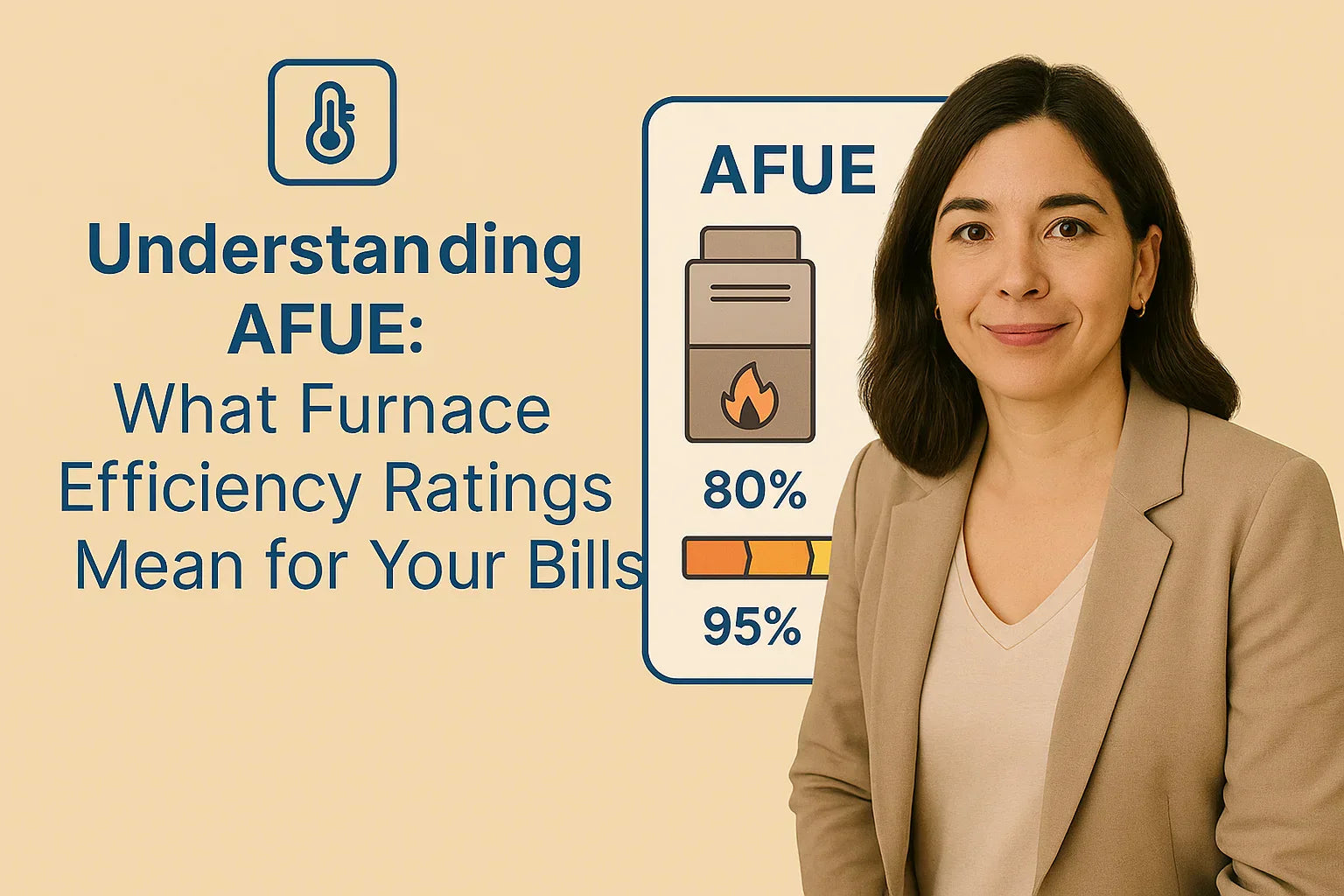🔍 Introduction: Why AFUE Matters for Homeowners
AFUE, or Annual Fuel Utilization Efficiency, is one of the most important metrics to consider when shopping for a gas furnace. It determines how efficiently your furnace converts fuel into usable heat, directly impacting your energy bills and long-term operating costs.
This guide will help you understand:
-
What AFUE measures
-
Typical AFUE ranges
-
How AFUE affects energy bills
-
AFUE vs. SEER and HSPF explained
-
When it’s worth investing in higher AFUE
-
Tax credits and rebates linked to AFUE
🧮 What Is AFUE?
AFUE represents the percentage of fuel converted into heat for your home over a heating season.
For example, a 90% AFUE furnace converts 90% of fuel into heat while losing 10% through exhaust.
Learn more with this Energy.gov AFUE overview.
📊 Typical AFUE Ranges
-
Older furnaces: 60-70% AFUE
-
Standard efficiency: 80-83% AFUE
-
High efficiency: 90-98% AFUE
Modern high-efficiency furnaces use secondary heat exchangers to capture and utilize heat that would otherwise be vented out.
💵 How AFUE Affects Your Energy Bills
Higher AFUE ratings mean lower heating costs over time. If your annual heating cost is $1,000:
-
Upgrading from 70% to 90% AFUE can save ~$200/year
-
Over 15 years, that is a potential savings of $3,000
🔄 AFUE vs. SEER vs. HSPF
-
AFUE: Heating efficiency for gas furnaces.
-
SEER (Seasonal Energy Efficiency Ratio): Cooling efficiency for air conditioners.
-
HSPF (Heating Seasonal Performance Factor): Heating efficiency for heat pumps.
AFUE is relevant only for fuel-burning heating systems.
Explore additional efficiency ratings at Energy Star.
🛠️ When Is High AFUE Worth It?
Investing in a high-efficiency (95-98% AFUE) furnace makes the most sense if:
✅ You live in a cold climate with high heating demand.
✅ Natural gas prices are high in your area.
✅ You plan to stay in your home for 10+ years.
✅ You want to reduce your carbon footprint.
🏷️ Tax Credits and Rebates Linked to AFUE
Many utility companies and government programs offer rebates for high-efficiency furnaces (typically 95%+ AFUE).
Check your eligibility using the Energy Star Rebate Finder.
🌎 Environmental Benefits of High AFUE
Higher AFUE furnaces:
-
Use less fuel for the same heat output.
-
Reduce greenhouse gas emissions.
-
Complement your home’s overall energy efficiency goals.
💡 Conclusion: Understanding AFUE Empowers Smart Furnace Decisions
AFUE is a key factor in:
-
Predicting your heating costs.
-
Understanding your furnace’s environmental impact.
-
Evaluating the ROI of high-efficiency models.
Before buying, compare AFUE ratings alongside your climate needs, gas prices, and future plans.
👉 Next Step: Explore high-efficiency gas furnaces with top AFUE ratings at The Furnace Outlet to begin reducing your energy bills while staying warm efficiently.
In the next article we will know more about: Will a High-Efficiency Gas Furnace Qualify for 2025 Tax Credits?







